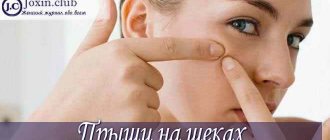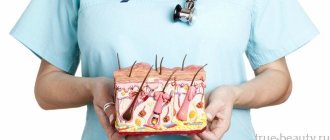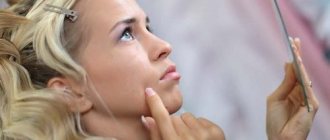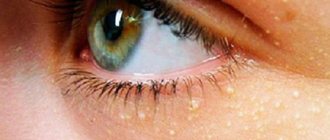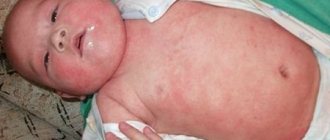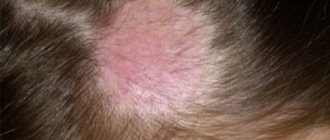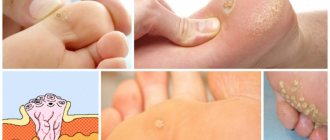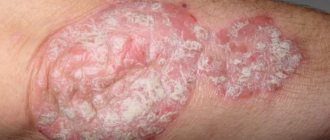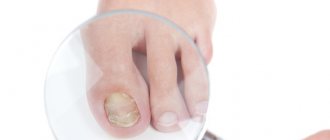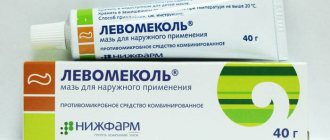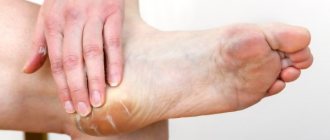The disease is caused by a mite that lives inside the hair follicle in humans and animals. According to statistics, about 90% of people are infected, but many do not even know about it. Depending on the state of the body, signs appear.
The most common causes of infection are: decreased immunity, chronic stress, diseases of the gastrointestinal system, endocrine disorders, failure of fat metabolism, bad habits, and failure to comply with personal hygiene rules. Demodicosis treatment on the face can be prescribed only after diagnosis, starting with the clinical picture.
Disease prevention
Prevention of subcutaneous mites consists of following the rules of hygiene, proper nutrition and lifestyle.
You should never use someone else's cosmetics or personal belongings. People who have had demodicosis should pay special attention to their health; they should consult a dermatologist if there is the slightest change in the skin of the face or eyes. The sooner treatment is carried out, the more effective the result will be
Patients with a history of demodicosis should visit a doctor twice a year, especially in spring and autumn, when the activity of the subcutaneous mite increases. By following basic hygiene rules and doctor's recommendations, you can get rid of subcutaneous mites for a long time.
Treating ticks on the eyes
Treatment of eye disease involves the use of such means as:
- Carbohol eye drops.
- Phosphacol eye drops.
- Acular drops
- Gel Demolan.
- Gel Blepharogel 2.
- Gel Demazol.
When an infection occurs:
- Ciprofloxacin.
- Levomycetin.
- Tobrazon.
Treatment of eyelid disease is carried out together with drug therapy.
| Medicine | Action | Dosage |
| Drops Carbohol | Immobilization of ticks. | 1-3 drops 3-4 times a day. |
| Phosphacol drops | Paralysis of limbs in Demodex mites. | 1-2 drops 2 times a day. |
| Acular drops | Elimination of some signs of the disease (pain, itching, burning). | 1 drop 3 times a day. |
| Gel Demolan | Helps destroy pathogens and eliminate symptoms of the disease. | 1-2 times a day. |
| Gel Demazol, Blepharogel 2. | Removes subcutaneous mites, thereby relieving symptoms such as itching, burning, inflammation. | 2 times a day with rubbing movements. |
| Ciprofloxacin | Suppresses the DNA molecule of ticks, preventing them from reproducing. | 1 drop 8-10 times a day. |
| Levomycetin, Tobrazon | Fights secondary infection, disrupting the vital activity of pathogenic and conditionally pathogenic microorganisms. | 1 drop 2-3 times a day. |
Other medications
Dimexide is prescribed simultaneously with acaricidal drugs. The medicine has anti-inflammatory, analgesic and antioxidant effects. Due to its ability to easily overcome cell membranes, Dimexide is used as a conductor for other drugs.
It helps acaricidal agents penetrate into the deep parts of the epidermis to affect iron mites. Dimexide gel is applied to the skin 1-2 times a day for 10-14 days. Dimexide solution (30-40%) is used for compresses. Gauze folded several times is immersed in the solution and applied to the inflamed skin for 15 minutes. After the compress, medications are applied.
The drug Baziron demonstrates high efficiency. The benzoyl peroxide contained in it successfully destroys propionibacteria and streptococci, which cause acne. The good results of therapy with Baziron are due to the high sensitivity of pyogenic bacteria to its active substance.
Baziron demonstrates high effectiveness in treating the disease
Skinoren is used to treat acne caused by iron mites. Its active ingredient is azelaic acid. The drug has anti-inflammatory, keratolytic and antibacterial effects. It restores impaired keratinization processes of the sebaceous glands and reduces the concentration of free fatty acids in skin lipids.
Skinoren cream is applied 2 times a day throughout the course of treatment for demodicosis. A noticeable improvement in skin condition is observed after 4 weeks of use.
The fungicidal-bactericidal drug Yam gives good results in the treatment of demodicosis. It contains salicylic acid, birch tar, zinc oxide, Lysol, lanolin, turpentine and petroleum jelly. The ointment must be mixed before use, since its ingredients may separate during storage. It is applied to the affected skin in a thin layer, then the skin is cleaned with a cotton pad soaked in oil.
The duration of the first procedure is 5 minutes. The next day, leave the ointment on the skin longer. The procedure is repeated once a day for 1-2 months, gradually increasing its duration to 15 minutes.
What does tick activity lead to?
Acne ironwort affects a person in several directions at once:
- By feeding on cells, microorganisms damage their structure not only mechanically, but also with chemicals contained in their saliva. The result of such activity is the appearance of inflammatory nodules, excessive keratinization of cells, and changes in skin color.
- After the death of the gland, substances are released that provoke the immune system to produce antibodies, which can result in the appearance of allergies.
- By suppressing the immune system, the gland thereby stimulates the activation of other inhabitants of the human skin belonging to the category of “opportunistic pathogens”.
Causes
The disease occurs due to excessive reproduction of the tick and its entry into the dermis. However, this happens only under certain conditions. They are called the causes of the disease:
- weakening of the immune system - at the same time, both pathogenic bacteria and microscopic organisms begin to multiply intensively, poisoning the dermis with metabolic and decay products. This not only worsens the general condition, but also provokes an allergic reaction in which the cells of one’s own skin are attacked;
- alcohol and smoking have a noticeable effect on the functioning of the blood system, especially the capillary system, and prolonged vasospasm and loss of tone create the basis for illness;
- old age - in this case, weak immunity is combined with lack of nutrition and changes in blood composition;
- gastrointestinal disorders - this changes the acidity of both biological fluids and tissues. And acidification is one of the most important provoking factors in the development of skin diseases. This category also includes bad eating habits that lead to the same result;
- endocrine disorders - ultimately lead to tissue changes and malfunctions of the immune system;
- liver diseases – cause changes in blood composition;
- taking certain medications provokes the same disorders and weakened immunity;
- skin ailments - rosacea, dermatitis, acne create an environment favorable for mite reproduction;
- disturbances in the functioning of the sebaceous glands and changes in the composition of sebum;
- cosmetics containing hormones - this is an extremely nutritious environment for ticks, so when combined with an existing skin ailment or gastrointestinal disorders, a hormonal cream guarantees activation of the tick;
- Stress and strong experiences, like nothing else, weaken the immune system and provoke an allergic reaction;
- Demodicosis can also be provoked by prolonged exposure to the sun or professional duties associated with staying near objects such as a stove, stove, or hot air flows.
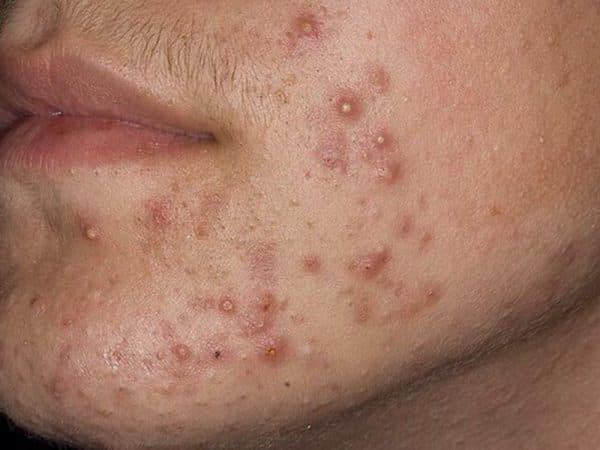
Demodectic mange of the facial skin occurs as a result of a combination of several factors that manifest themselves against the background of weakened immunity.
What is demodicosis?
Demodicosis is a skin disease caused by the microscopic demodex mite. Almost every person has it in small quantities. But only 7-8% of the population gets sick
.
With demodectic mange, the skin of the face and scalp is usually affected; the chest, back and hips are less commonly affected.
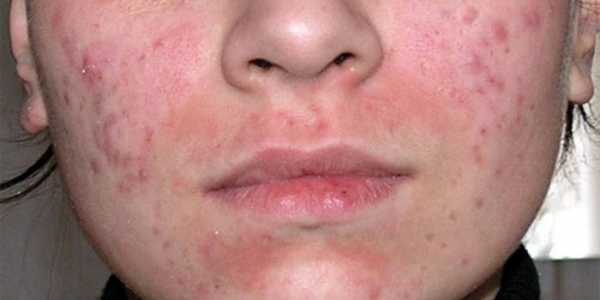
Details about the pathogen
Demodex lives peacefully in the sebaceous glands and hair follicles of humans. The parasite is opportunistic, so healthy people do not even notice its presence. But under certain conditions, the mite begins to multiply quickly and provokes a dermatological disease - demodicosis, or, as people say, demodex.
The reasons that may serve as a trigger for the onset of the disease are the following:
- disruptions in the functioning of the endocrine system;
- disorders of the gastrointestinal tract;
- frequent stress, etc.
The mite feeds on sebum and keratin. And its waste products cause inflammatory processes.
The parasite is so small that it is impossible to see it with the naked eye.
So how to determine the presence of the disease?
- To keep your facial skin in good shape, cleansing your face from acne and blackheads at home remains an important and necessary procedure.
- Not a single woman will benefit from bags under her eyes, the causes and treatment of which you can learn from our article and prevent their occurrence in the future.
Cream for demodicosis: drugs and their features
Patients who suffer from dry and inelastic skin should choose a creamy form of the drug. Let's consider suitable means and their features.
Xinsheng (Demodex complex cream)
The drug is applied to cleansed skin before bedtime. Despite many positive reviews, this product raises questions regarding its composition. The manufacturer claims that the components are completely natural, but there is no exact information about them.
Demalan
Cream for the treatment of demodicosis on the face and eyelids, contains many complementary components:
- metronidazole;
- lanolin;
- olive oil;
- chamomile extract.
The product has a pronounced antibacterial, anti-inflammatory and moisturizing effect, relieves redness and itching, and promotes tissue regeneration. Apply twice daily.
Stop-Demodex
Multicomponent cream combining metronidazole, hyaluronic acid, D-panthenol, vitamins A, E and plant components - tar and extracts:
- witch hazel;
- rose leaves;
- white willow bark;
- apple leaves;
- calendula;
- oak bark;
- chamomile
The product is applied twice a day to cleansed skin. Used as an addition to the main treatment. Contraindications: hypersensitivity to the components of the drug.
Manting
The cream contains components such as allantoin, ginseng extract, vitamin E and amino acids. The product effectively fights mites, removes toxins produced by the pathogen from the body and actively regenerates damaged skin cells.
Mite creams and ointments will only be effective if they are part of a well-designed treatment plan that includes diet, oral medications, proper hygiene, and management of overall health problems.
Why does demodicosis occur?
Externally, demodicosis is very similar to ordinary acne, so many are not aware of the presence of a subcutaneous mite, which may not cause discomfort for a long time, and only when the body’s defenses are reduced or other disorders actively multiply, provoking inflammation of the skin. The main reasons for the development of demodicosis:
- decreased immunity;
- disorders of the gastrointestinal tract;
- endocrine disorders;
- neuropsychological disorders;
- violation of metabolic processes;
- hormonal disorders;
- wrong lifestyle;
- prolonged exposure to the sun;
- pregnancy;
Attention!
To make information easier to understand, these instructions for use of the drug “Ointments for ticks” have been translated and presented in a special form based on the official instructions for medical use of the drug. Before use, read the leaflet included directly with the medication.
The description is provided for informational purposes and is not a guide to self-medication. The need to use this drug, the prescription of the treatment regimen, methods and doses of the drug are determined solely by the attending physician. Self-medication is dangerous for your health.
Treatment
Treatment of the disease involves combination therapy. It is necessary to eliminate not only the irritant - the mite, but also the cause of the activity of the acne gland. In addition, if the disease has already progressed to an advanced form, you will have to resort to more specialized procedures, including plastic surgery, in order to return the nose or chin to its normal shape.
Drug treatment
Be sure to include external agents, since otherwise it is impossible to destroy the tick. A variety of ointments are used depending on the severity of the disease:
- creams and ointments containing sulfur, tar and other substances that have an antiparasitic effect - Wilkinson's ointment, Yam ointment, ichthyol ointment, sulfur-tar, benzyl benzoate and so on;
- drugs that normalize skin microflora - usually includes metronidazole. These include “Trichopol”, “Tiberal”;
- products containing azelaic acid. The latter has excellent anti-inflammatory and antimicrobial effects;
- To destroy ticks, you can use a 6% solution of hydrochloric acid, sulfur-tar alcohol.

Ichthyol ointment is effective in the fight against demodicosis
To relieve symptoms and restore skin damage, additional medications are required:
- antihistamines that suppress allergic reactions - Tavegil, Suprastin, Diazolin;
- vitamin complexes that help restore immunity;
- medicines to strengthen the walls of blood vessels - “Ascorutin”, for example;
- sorbents - “Sorbex”, “Enterosgel”, absorb toxins and remove them from the body;
- if the affected area is large, antibiotics can be used.
To cleanse your skin, you can also try masks from Polysorb.
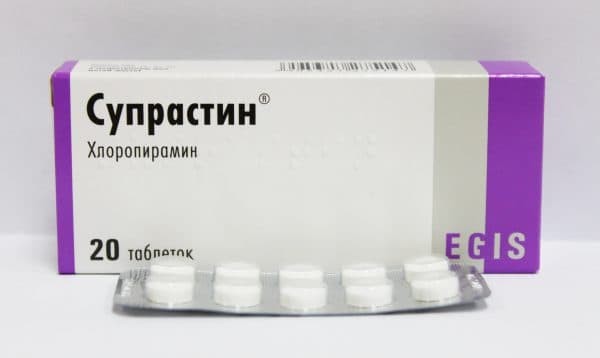
Suprastin - an antihistamine to suppress allergies
Physiological procedures are also prescribed to restore the protective functions of the skin itself:
- electrophoresis - in combination with special components. Current suppresses the vital activity of microorganisms, and moisturizing reduces the production of natural skin lubrication;
- microdermabrasion – used during the remission stage. The procedure removes the top layer of skin containing mites and eggs;
- peeling – chemical. It also helps destroy parasites. Gas-liquid peeling will be useless in this case.
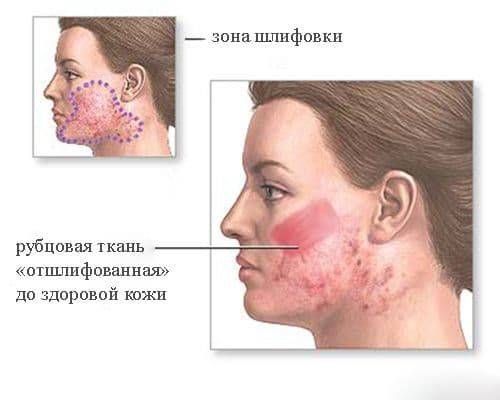
ethnoscience
In the first stages of the disease, folk remedies help to cope with it.
- Tar soap is the simplest and most effective home method. The face is washed with soap, and a mask is also used: grated soap is added to warm water, whipped until foamy and applied to the face. The foam must dry completely, then the mask is washed off.
- Yellow clay mask - clay is mixed with warm water until a paste is obtained. The yellow clay mixture is then applied to the damaged skin, left to dry and washed off.
- An ointment based on tar and sulfur is prepared as follows: 1 tablespoon of birch tar is mixed with 2 tablespoons of melted lard and 3 g of yellow sulfur. The mixture is boiled for 3 minutes, cooled and used: applied as a cream at night, and washed off in the morning with water and tar soap.
- It is recommended to wipe your face with calendula tincture every day - 1 tablespoon of flowers is poured into 50 ml of alcohol and infused in the dark for 3 days. The infusion is used twice a day.
It is also worth trying masks with dimexide according to the recipes collected in this material.
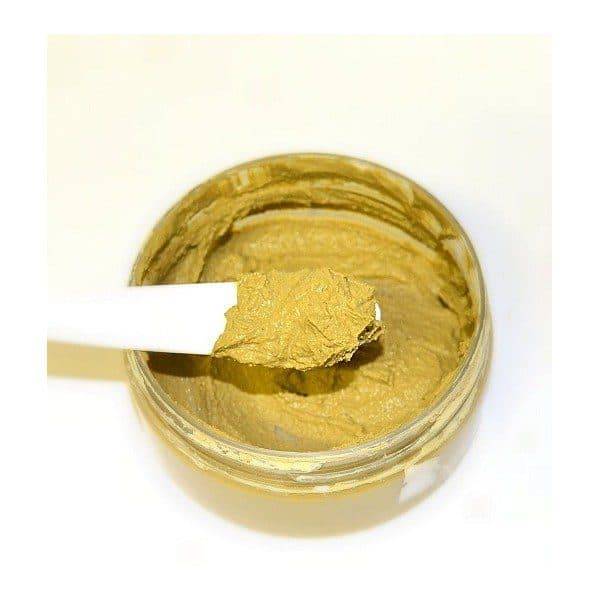
A yellow clay mask is a good folk remedy to combat this disease.
Surgical intervention
Surgery is required at the stage of hyperplasia, when the disease has led to the formation of disfiguring skin growths. The intervention is performed to restore an aesthetic appearance. The surgical plan and degree of correction are determined in each case individually. Preference, of course, is given to a minimally invasive method.
Laser treatment is considered the best today, as it guarantees a local, literally targeted effect on the surface, minimally damaging the skin. For single bumps, electrocoagulation is successfully used: the wound surface is minimal and healing proceeds quickly. In some cases, Darsonval can help against demodicosis.
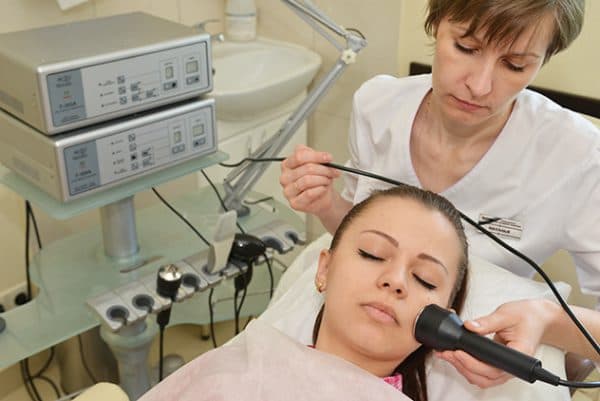
The most effective treatment for demodicosis is laser therapy.
How to treat

Treatment for demodicosis on the face should be comprehensive. It includes medications, traditional methods, and a positive psychological attitude. In any case, the patient needs to stop using any cosmetics and improve facial hygiene. It is important to follow a diet.
At home
To get rid of this problem at home, a pharmacy tincture of calendula in combination with Demalan ointment is suitable. After washing your face in the morning, pat your face dry with a towel. After 15 minutes, wipe with tincture. And after another 5 minutes, apply Demalan in a thin layer. In the evening you need to wash with soap, wipe with calendula, but do not use the ointment. This simple algorithm must be followed for forty days.
Another option for the eyes: in the evening before bed, grind two Trichopolum tablets in a spoon of castor oil and apply to the affected eyelids. Rub it in lightly and leave until morning.
Folk remedies

Treatment of demodicosis on the face using folk methods can be auxiliary in combination with other measures to suppress demodex.
Note! Excessive application of masks can cause negative consequences - allergic reactions to some component or due to mechanical impact are possible. It's better to choose one recipe. Before starting treatment, you should consult your doctor.
Clay mask with herbs
Stir white or blue clay in a decoction of celandine, chamomile, calendula, and nettle herbs until it reaches the consistency of sour cream. Spread the resulting paste onto cleansed skin and leave for 20 minutes. Then wipe with a damp cloth or cotton pad with lotion, and wash with cool water.
Clay mask + bodyaga
Take 1 tbsp. a spoonful of clay (blue or white) and 1 teaspoon of bodyagi and mix with the same amount of water. Apply to face and leave until dry; tingling may be felt. Remove the dried mask with a disk soaked in lotion.
Herbal collection
For internal use, the herbs of string, mint, plantain, nettle, and tansy are used. They are mixed in equal parts and crushed. Pour boiling water over a tablespoon of this powder and leave. Take before meals several times a day.
Herbal infusions for rubbing
Infusion of calendula flowers. Pour alcohol over the flowers and leave for 2 days.
Decoction of elecampane root. Boil 1 tablespoon of ground root in a glass of water for 10 minutes. Leave for 6 hours, strain, wipe your face.
Tar soap
To dry and restore skin texture, they need to be washed in the morning and evening. If excessive dryness is observed after use, you can limit yourself to one time.
Decoction of bitter wormwood
Pour a few tablespoons of dry ground herb into a liter of boiling water, then boil for five minutes and leave in a warm place for 3 hours. Take this decoction orally for 6 days, without interrupting treatment even at night:
- 1st day – ½ glass every hour;
- 2nd day – ½ glass every few hours;
- 3rd – 6th day – ½ glass every 3 hours.
You need to prepare a fresh decoction every day. You can sweeten it with honey. This remedy perfectly cleanses the intestines.
Compresses and lotions for demodicosis of the eyelids
Boil a teaspoon of crushed oak bark in a glass of boiling water for 5 minutes. Make lotions with such a warm decoction;
A piece of sterile bandage soaked in freshly squeezed juice of indoor aloe can be applied to the eyes several times a day;
Garlic compresses
Grind six cloves of garlic to the consistency of sour cream, pour in ½ teaspoon of sunflower oil, mix. Apply the mixture to a piece of sterile bandage folded twice and apply to the affected area. Cover the top with cellophane and secure everything with a bandage. Leave for 30 minutes, rinse with warm water and tar soap.
Drugs

After confirming the diagnosis, the dermatologist determines an individual medication regimen and the possibility of supplementing it with unconventional methods. During this time, it is prohibited to visit the bathhouse, solarium, and beauty salons. On average, therapy lasts at least 5 weeks.
Drug treatment of demodicosis on the face involves the use of products based on metronidazole and tinidazole. The negative point is that to achieve the required high concentration in the skin, you have to take a high dose of drugs, which has a bad effect on the liver and hematopoietic organs. Therefore, many experts consider this inappropriate.
To treat this disease, drugs such as sulfur, mercury, tar, zinc and ichthyol ointments are often used, which have drying, anti-inflammatory and disinfecting effects. Ointments containing metronidazole, erythromycin and clindamycin are widely used.
External gels containing metronidazole are considered more effective. This form is easily absorbed, quickly penetrates into the deep layers of the skin, cools and does not contain fat. For deep lesions, prescription ether and alcohol talkers are prescribed. They are used in short courses because they provoke overdrying of the epidermis.
In addition to local therapy, immunomodulatory, vitamin, and antihistamine drugs are prescribed. In addition, physiotherapeutic procedures (cryomassage, ozone therapy, phototherapy, electrophoresis) can be included.
All medications are prescribed by the attending physician; self-medication can lead to complications (blepharitis, conjunctivitis, dermatitis, psychosis).
Diet
It is important to follow a diet when fighting the disease, because a lack of vitamins and micro- and macroelements contributes to the rapid development and reproduction of ticks.
First of all, you should limit your use of:
- salt;
- smoked meats;
- spicy dishes.
You will have to give up foods high in glucose. Avoid citrus fruits in your diet. Honey is a strong allergen, and it is also the best source of food for mites. It must be completely eliminated until complete recovery.

You should also give up smoking and alcohol. They weaken the body, thereby creating favorable conditions for parasites.
The basis of the patient's diet is:
- vegetables and herbs;
- fermented milk products – fermented baked milk, kefir, milk, yoghurts (without citrus fillers);
- cellulose;
- cereals;
- porridge (oatmeal, buckwheat, pearl barley and millet);
- grain bread.
It is also recommended to drink a lot of liquid in the form of compotes, tea, and clean water.
Using ointments against ticks during pregnancy
If you are infected with mites during pregnancy, you should definitely consult a doctor, who will only recommend medications that will not harm the gestation process and intrauterine development of the baby.
It is most dangerous to use medications in the first half of pregnancy, when the formation of the main organs and systems of the child occurs. First of all, this applies to ointments based on metronidazole.
If possible, it is generally better to postpone the use of ointments against ticks until a later period - after the birth of the baby.
However, there are relatively safe anti-tick products that can be used by pregnant women:
- Sulfuric ointment;
- zinc ointment;
- Demodex Complex milk;
- Xinshen and Kang cream (DK).
Such remedies can be used after prior consultation with a doctor.
Fungicidal-acaricidal ointment
A preparation with fungicidal and bactericidal action, based on sulfur, additional components:
- turpentine;
- petrolatum;
- tar;
- aspirin;
- zinc oxide.
It is used for dermatitis of various forms, demodicosis, eczema and other skin pathologies. Apply mainly to the face, can be used on the eyelids, twice a day. It is necessary to remove the remaining ointment with a cotton swab 30 minutes after application; the duration of use depends on the complexity of the disease. The course of treatment is adjusted by the doctor, depending on the microscopy of the epidermis of the affected areas. If the causative agent of the pathology cannot be identified, the course of treatment may be re-prescribed.
How can demodicosis be treated?

You can influence facial demodicosis using different methods. The doctor who diagnosed the disease will help you determine the right choice. He will prescribe special procedures and may also prescribe certain medications.
Popular influence methods include:
- Mechanical peeling,
- Treatment with liquid nitrogen,
- Laser photocoagulation,
- Treatment with mixtures of oxygen and ozone.
Causes of the disease
The facial mite is able to live in the skin for a long time in a passive form without causing harm. However, when certain conditions arise, the parasite is activated, begins to multiply and causes infectious lesions on the skin of the face or eyelids, which requires special comprehensive treatment. The following factors are identified that provoke the development of demodicosis on the face:
- long-term treatment with hormonal drugs;
- endocrine disorders;
- poor nutrition;
- increased activity of the sebaceous glands;
- decreased immunity;
- chronic diseases;
- depression, stress;
- abuse of solarium;
- smoking, regular alcohol consumption.
The infectious disease is transmitted through direct contact with a carrier of the parasite, through hygiene items, bed linen, and towels. The treatment regimen for demodicosis depends on its form - it can be dermatological or ophthalmological. The first manifests itself in the form of redness, dilation of blood vessels (rosacea), small rashes, rosacea, and pustular rashes. Demodicosis of the eyelids causes swelling and inflammation of the eyes, itching, loss of eyelashes and eyebrows.
Factors causing demodicosis
Favorable conditions for the occurrence of demodicosis can be created by external or internal factors. Poor ecology, non-compliance with personal hygiene rules, the use of low-quality cosmetics - all this favors the pathological process of infection of the skin. Sometimes the person himself can cause the onset of the disease. Squeezing acne on the face helps the pimple penetrate deeper and subsequently spread.

Poor nutrition and alcohol abuse contribute to the development of inflammation. This is due to metabolic disorders and weakening of the protective properties of the epidermis. Internal factors causing demodicosis include:
- Decreased general condition of the body (weakened immunity due to illness).
- Skin inflammation. Against the background of dermatitis, demodicosis is often detected.
- Diabetes. Causes metabolic disorders, which leads to damage to the epidermis.
- Pregnancy. In the third trimester of pregnancy, increased production of the hormone testosterone begins, which is responsible for the secretion of sebum. For the Demodex brevis mite, this is a favorable environment in which it can multiply intensively.
Form of release of drugs against demodicosis for external use
The effectiveness of topical medications depends on many factors. Affect:
- localization of damage;
- affected area;
- depth of parasite penetration;
- form and nature of pathology;
- general health of the patient.
Ointment is a convenient form of release for local therapy. The drug can be single-component or contain several active ingredients that complement each other. The base substance of the ointments is neutral, does not cause allergies and does not change its properties after application to the skin or under the influence of temperature.
Cream for demodicosis is the best choice for patients whose skin, under the influence of subcutaneous mites, has lost its elasticity and become dry. This form of release allows you to moisturize the surface of the body, penetrating into the deep layers of the skin, and reduce the inflammatory process. In addition to the main cause of the pathology, the cream also helps to overcome the consequences of its development.
Each active ingredient in the drug has its own advantages, but we must not forget about contraindications - when choosing a drug for local therapy, you need to consult a dermatologist or carefully study the instructions for the drug.
Skin care for demodicosis
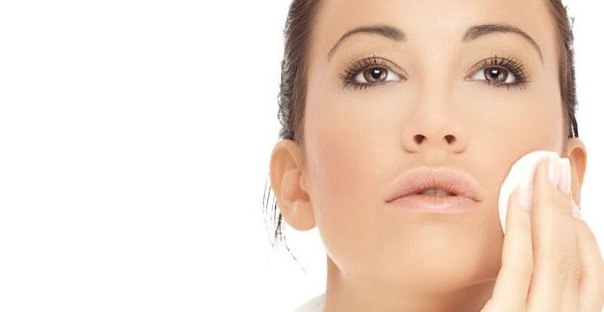
Every day you need to carry out three stages of facial care using selected products for oily and problem skin. The first stage - cleansing is carried out with a special washing gel. It is desirable that it contains salicylic acid, but without alcohol. It is forbidden to wash your face with soap, because it can dry it out - only with gel. Wash with warm water, but not cold. Then the toning stage, wipe your face with a cotton pad with a special tonic for problem skin. Finally, apply a medicated cream or ointment. There are creams that do not require rinsing: they can be applied throughout the day as a base.
You should try to avoid touching your face with your hands to avoid the spread of germs, dust, and dirt. It is especially important to remember this when working at a computer, because a large number of microorganisms and dirt accumulate on the keyboard and mouse.
Owners of glasses should regularly wipe them with alcohol in areas of contact with the skin. To cleanse your face throughout the day, it is better to use lotion instead of water.
Sunbathing stimulates sebum production. You can sunbathe, leaving your head in the shade to prevent allergies, and do not use sunscreen on your face.
To reduce the risk of spreading mites, it is advisable to change the feather pillow to a silicone one, and change the pillowcase on it every day.
It is important not to squeeze pimples - this can aggravate the situation, inflammation can spread into the deeper layers of the dermis, this will lead to new rashes. To release the pus out, treating the abscess with ichthyol ointment at night will help. Treat the lesion with it until all the contents come out of it, and then you can apply anti-inflammatory ointments (Vishnevsky, oflocaine).
Signs of the presence of the disease in humans
There are several factors indicating that this disease is progressing in the body:
- a feeling of itching and pain in the eyelid area, which becomes stronger after removing cosmetics;
- the occurrence of severe swelling and a state of hyperemia - skin redness;
- In infected people, eyelashes begin to noticeably fall out, and crusts with pus form along the edges of the eyelids;
- peeling appears on the skin, there is a possibility of infection with barley;
- in complicated stages and situations there is a possibility of lacrimation, dry conjunctiva, and increased photosensitivity.
These signs are most pronounced in the morning, which causes serious cosmetic defects and psychological discomfort. For therapy, an ointment is used that has a special composition that helps eliminate symptoms and suppress the influence of causative factors.
Onset of the disease
The disease usually begins in the fall. After the summer heat, the body weakens, and nothing interferes with tick attacks. The parasite does not tolerate sunlight, so its activity increases sharply in the evening.
How to distinguish the disease from ordinary acne
At first glance, these two diseases are similar to each other; both have a history of pustular acne. But demodicosis is easy to distinguish by the following signs:
- Unnatural shine on the affected areas.
- Lumpy relief of the skin, the presence of ulcers.
- Plaque along the edges of the eyelids, eyelashes begin to break and fall out.
- In advanced stages, the face takes on a sallow gray or purplish-red hue, and the nose becomes knobby and blue-red.
If you notice signs of demodicosis, immediately go to the doctor for an accurate diagnosis. They will take a couple of eyelashes from your eyelids and a small scraping from the inflamed skin for examination. An absolutely painless procedure.
What to do after the diagnosis is confirmed
First of all, do not panic, but sit down and analyze your own lifestyle. We need to understand what awakened the parasite. Understanding and eliminating the root cause will speed up treatment many times over. What do you know?
- Diseases of the endocrine system, liver or gastrointestinal tract
- Prolonged stress
- Serious weakening of the immune system after severe infectious diseases
- Long-term use of hormonal drugs
- Excessive love for saunas and solariums
- Addiction to fast food, fatty foods and carbonated drinks
- Contact with an infected person
By the way, when in contact with a patient, sometimes you will not even be able to understand that he has demodicosis. This disease is asymptomatic at the initial stage.
Prevention of re-infection
It is possible that after completing the course, re-infection will occur.

To prevent relapse, you must:
- Observe the dosage and frequency of use of the ointment (if the doctor told you to use it 3 times a day, then apply it no more often or less often).
- During treatment, the patient must observe the rules of personal hygiene: take a shower regularly, wash your face, and do not touch the skin (especially infected parts of the face) with dirty hands.
- It is recommended to avoid cosmetics and products that can harm inflamed skin or clog pores (powder, concealer, foundation).
- During treatment, be sure to change towels, bed linen and underwear frequently. It is advisable to do this daily - parasites may remain on underwear and clothes, which can again end up on the face. Removed clothing and underwear should be washed immediately.
After completing the course, it is advisable to undergo a re-analysis. It is also recommended to take the test another 1-2 weeks after the end of treatment to make sure that the mite has not reappeared in the skin from the remaining eggs.
The issue of facial hygiene in the treatment of demodicosis
Facial hygiene is an aspect of the same importance as medications; without it, recovery will not occur. The purpose of the procedures is to clean and narrow pores, remove sebum, neutralize inflammation, which will greatly facilitate therapy and speed up recovery.
Dermatologists often adjust an individual regimen based on a specific picture, but the general rules set a specific direction that solves the main task - the quick and complete elimination of the symptoms of demodicosis.
The general scheme for demodicosis of the face includes:
- washing with tar soap or products with neutral pH;
- avoiding facial contact with tap water - use decoctions and infusions of herbs, thermal or micellar water instead;
- rubbing with prescribed mash, which will narrow the pores and affect the synthesis of sebum;
- rubbing ointments, emulsions or gel;
- medicinal antimicrobial masks based on tar and clay;
- moisturizing facial skin with a neutral medicinal cream;
- rubbing the face with calendula tincture.
At the same time, it is recommended to resort to deep peeling, preferably in a salon setting, to even out the affected layer of the epidermis.
It is important for those suffering from demodicosis to develop the habit of touching their face less with unwashed fingers; if the itching is severe, it is better to use a damp antibacterial wipe.
Important! It is better to avoid tanning, including in a solarium, during treatment! Bath and steam procedures are similarly excluded. Heat increases the production of sebum and activates the ducts, which the tick will inevitably take advantage of!
Names of ointments for demodicosis
Anyone who has encountered this kind of skin disease should know the name of ointments for demodicosis. Before we begin describing ointments, let's look at what demodicosis is. Demodicosis is a skin disease that occurs due to infection with demodex mites. With demodicosis, the skin of the nasolabial folds, chin and eyelids is most affected. The patient develops papules, pityriasis-like peeling and pustules. All medications for demodicosis (acaricides) have a common mechanism of action - the destruction of demodex mites. Exposure to mites can be systemic, taking medications orally or applying them to affected areas of the skin.
The most famous and popular names of ointments for demodicosis: Benzyl benzoate, Ichthyol ointment, Sulfur ointment, Zinc paste, Metrogyl jelly, Tar ointment. All ointments are antiparasitic agents, which contain substances that cause paralysis of the tick and its death. Taking into account the tick development cycle, demodicosis ointment is used for 4 to 6 weeks.
Let's look at the names of ointments for demodicosis and the principle of their action:
- Benzyl benzoate is a popular remedy for demodicosis, available in the form of ointment and emulsion. Despite its effectiveness, the ointment can cause adverse allergic reactions. The duration of treatment and frequency of application are determined individually for each patient by the attending physician.
- Sulfur ointment is a drug classified as an acaricide and is widely used to treat various skin diseases. The ointment has a paralytic effect on the tick, immobilizes it and leads to death. The ointment contains sulfides, which accelerate the regeneration processes of damaged skin, restore and heal wounds.
- Yam ointment is a bactericidal drug that contains components with acaricidal activity. The ointment is a veterinary drug, but is also approved for use in humans. The only drawback of the ointment is its unpleasant pungent odor and difficulty in washing off.
- Permethrin ointment - the ointment contains substances of synthetic origin - pyrethroids, which have a minimal molecular size. The advantage of the ointment is its deep penetration into the skin and through the tick's shell. Thanks to this, the ointment causes the death of parasites. The drug does not have an irritating effect, is low-toxic and does not accumulate in the body. It is more effective than sulfur ointment.
- Manting - in addition to the drugs described above, this cream is used to treat demodicosis. The drug contains only natural ingredients that destroy the parasite. Amino acids, vitamins and extracts from medicinal herbs increase immunity and restore skin damaged after demodicosis.
Treatment of demodicosis with folk remedies
Treatment of demodex at home involves the use of masks, compresses or lotions.
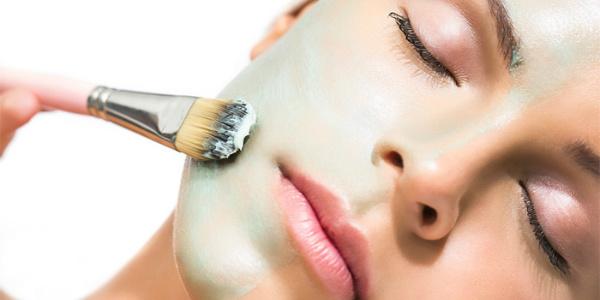
Face masks
Option 1
Ingredients (sold at the pharmacy):
- purified sulfur powder;
- liquid birch tar;
- sea buckthorn oil.
Preparation and use.
All components of the mask are taken in equal quantities (1 tbsp is enough) and mixed. The medicinal composition is applied to damaged areas for 30-40 minutes. The procedure is repeated twice a day until complete recovery, but no more than 3 weeks.
Option 2
Ingredients:
- olive oil - 1 tbsp. l.;
- finely grated garlic - 1 tbsp.
Preparation and use.
The ingredients are combined and applied to the affected areas. Place pieces of cling film on top. After 30-40 minutes, the mixture is washed off and the skin is lubricated with baby cream. The course is 15-20 days.
Option 3
Ingredients:
- any natural sour juice - 2 tbsp. l.;
- egg white - 1 pc.
Preparation and use.
Apply the combined components to the inflamed parts of the face. After 30-40 minutes, rinse off the mask with warm water. Repeat the procedure once a day until complete recovery.
Treatment with grease ointment
Ingredients:
- grease - 1 tbsp. l.;
- olive oil - 1 tbsp;
- birch tar - 1 tbsp.
Preparation and use.
Combine all the ingredients and gently rub the ointment into cleansed Demodex-affected facial skin every day before going to bed - this treatment lasts 2-3 weeks.
Treatment with black hunting powder
This remedy is known as one of the most effective in the treatment of demodicosis.
Ingredients:
- gunpowder - 2 tbsp;
- crushed copper sulfate - 1 tbsp;
- butter - 200 gr.
Preparation and use.
Melt the butter in a water bath, pour it into a container with the remaining ingredients and mix the composition thoroughly. At night, apply this compress to the affected areas and cover it with plastic wrap. In the morning, the medicinal mixture is washed off with warm water.
The course of treatment for demodex in this way is 30 days.
Acaricidal agents for topical use
Antiparasitic or acaricidal agents for demodicosis contain components that destroy subcutaneous mites. To treat lesions on the face, ointments, creams, and aerosols are used with:
- benzyl benzoate;
- permethrin;
- piperonyl butoxide;
- metronidazole;
- alphacypermethrin.

The course of treatment for demodicosis with antiparasitic agents is from 2 to 4 weeks.
Metrogyl-gel
Acaricidal preparations for demodicosis have a detrimental effect on acne and pathogenic bacteria. Metronidazole is the main active ingredient of Metrogyl-gel. It has anti-inflammatory and antioxidant activity. Used to treat inflammatory acne, nodules with rosacea, and demodicosis.
The gel is applied to the affected areas of the face twice a day. The therapeutic effect is observed after 2-3 weeks of systematic use of the drug.
Benzyl benzoate
Cream with benzyl benzoate eliminates demodicosis on the face and other parts of the body. An effective acaricidal agent destroys:
- scabies mite;
- acne iron;
- lice.
Features of using the cream:
- Apply only to clean skin;
- lesions are treated once every 3-4 days;
- the course of treatment is 2-2.5 weeks.
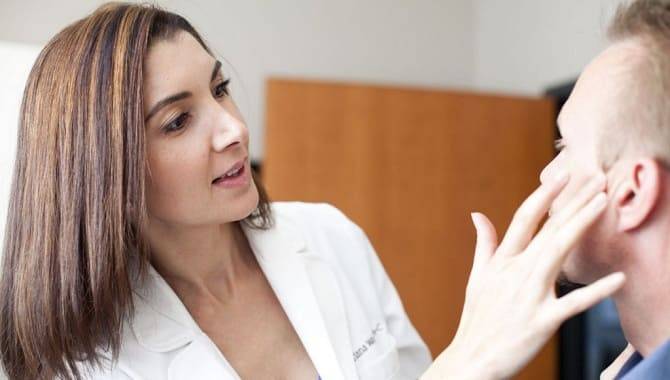
Benzyl benzoate causes a slight burning and tingling sensation. In most cases, symptoms disappear after 2-3 days.
Permethrin ointment
Ointment with permethrin gets rid of subcutaneous mites in 1.5-2 weeks. Causes nervous paralysis of the causative agent of demodicosis and scabies. The low-toxic drug is active against adults, larvae and eggs of demodex.
Permethrin ointment is applied to the face once a day, in the evening. To improve the absorption of components, the skin is first cleaned of impurities and natural fat. The optimal course of treatment is 2 weeks.
Rozamet
Cream with metronidazole has antibacterial and acaricidal activity. It destroys the DNA of parasitic mites, which leads to their death. When treated locally, demodicosis on the face does not cause changes in the skin microflora.
Rozamet is prescribed for:
- rosacea;
- acne;
- demodicosis;
- steroid dermatitis.
The cream is rubbed into nodular rashes on the face with massage movements up to 2 times a day. The average course duration is 2-3 months. Improvements are observed after 3 weeks of regular use of Rozamet.
Antiparasitic cream should be used with caution in case of disturbances in the hematopoietic system.
Spregal
An aerosol with piperonyl butoxide and esdepalletrin is one of the most effective remedies for facial demodicosis. The components of the drug are active against scabies mites and scabies.
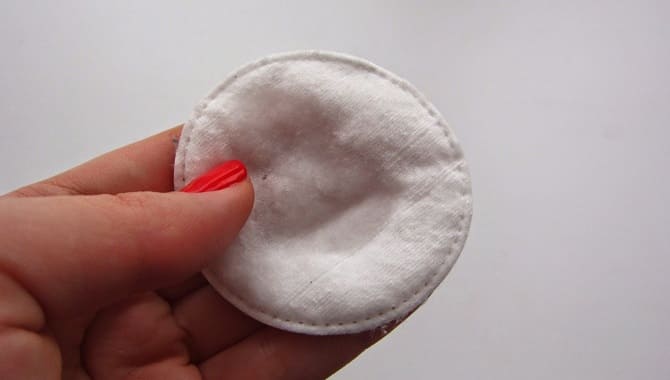
The aerosol is intended for spraying rashes on the face. But when treating demodicosis, it is recommended to irrigate a cotton pad with Spregal and wipe the affected areas with it.
The acaricidal agent is applied at night only to a cleansed face. For multiple rashes, treatment is carried out up to 3 times a day for at least 8-15 days.
Stop demodex cream
To cure demodex on the face, use STOP Demodex cream. It includes:
- hyaluronic acid – accelerates skin regeneration;
- chamomile extract – reduces inflammation, prevents rashes on the face;
- Metronidazole – destroys the causative agent of demodicosis.
The cream is rubbed into the affected area with massage movements up to 3 times a day. Before the procedure, the face is cleansed of decorative cosmetics and impurities.
Other local remedies
Creams and gels for demodicosis are quite effective, since their components easily penetrate deep into the foci of inflammation. To remove rashes on the face, use the following acaricidal agents:
- Sulfur ointment is an antiparasitic and disinfectant drug that eliminates rashes. Used in complex therapy of sycosis, scabies, fungal diseases and demodicosis.
- Yam is a fungicidal-acaricidal agent with salicylic acid, birch tar, and sulfur. Shows antiseptic, drying and antiparasitic activity. It is used in veterinary practice, but is often included in the local treatment of demodicosis, trichophytosis and eczema in humans.
- Demazol is a cream with methylnitroimidazole that quickly eliminates demodectic rash on the face and other parts of the body. Additionally contains herbal components that eliminate inflammation and irritation.

To destroy demodex, it is recommended to use antiparasitic ointments and creams in courses of 2-4 weeks.
Demodectic mange on the face in women: treatment methods
Demodicosis of the facial skin is a disease that can be easily confused at the initial stage with ordinary acne. The cheeks are covered with pimples and redness is observed.
Most often, demodicosis occurs in women; their skin is whiter, more sensitive, and prone to increased oiliness. If the disease is not treated, the pores become clogged, the surface of the face becomes very swollen, becomes bright red and lumpy.
It is better to start therapy immediately after discovering the culprit of the problem - the subcutaneous mite.
Causes of development and possible complications of the disease
The disease is caused by a mite called demodex folliculorum. It is found in small quantities in most healthy people.
But, when conditions favorable for it are created, it begins to actively multiply and penetrates to the deeper layers of the epidermis. Demodex waste products lead to inflammation, acne, and swelling.
Factors favorable for the development of the parasite:
- Oily skin, abundant secretion of sebaceous glands. The tick feeds on sebaceous secretions, so its favorite places are the wings of the nose, cheeks, and forehead.
- Weakened immunity. In a healthy state, the immune system is able to fight pathogenic microorganisms. They can be asymptomatically present on the body, waiting until the body weakens.
- Disorders of the intestinal microflora create conditions favorable for skin diseases.
- Cuperosis. Fragile vessels located close to the surface of the skin are often injured. The blood flowing from them becomes a good source of nutrition for the tick.
- Erasure of the protective layer of the epidermis occurs due to excessive use of scrubs, peelings, and mechanical facial cleansing.
The parasite enters the human body through contact with pets (they always have it), feather pillows, and dirty towels. Infection from a person carrying the pathogen is unlikely.
If an infection is detected, treatment must be started quickly; it actively multiplies in a favorable environment, which leads to complications.
- Edema and swelling of the eyelids, chin, cheeks. The nose increases in size, acquires a red and even bluish tint.
- Dilatation of blood vessels, their deformation. Unsightly spider veins and small hematomas appear.
- Enlarged pores, unevenness, profuse acne leaving scars.
It is impossible to notice a tick with the naked eye; it is less than half a millimeter. Pathology can be identified using laboratory analysis for this parasite, or by external signs and symptoms.
Symptoms of the disease
At first, it is difficult to detect the presence of the disease; it can be confused with rosacea, dermatitis, and teenage acne.
- The face becomes inflamed and covered with small pimples. A characteristic pinkish tint appears. The rash itches, and after the acne disappears, painful sores remain;
- There are more pimples, and when one is squeezed out, two or three new ones appear. Symptoms worsen in the afternoon and late afternoon. At this time, the tick begins to multiply and becomes more active;
- The oval of the face becomes loose, the cheeks and nose increase in size. Eyelids swell, eyes itch, eyelashes fall out. Extensive red spots appear on the face, the affected areas are loose to the touch and greasy;
- As the parasite multiplies, new affected areas of the skin, ears, head appear, and can spread to the shoulders, chest, and abdomen.
Having discovered these symptoms, you need to urgently go to a dermatologist, he will refer you for laboratory analysis and prescribe appropriate treatment for demodicosis. The specialist performs a skin scraping to identify the presence of the parasite. The disease is confirmed only with an increased amount of Demodex; 1-2 detected microorganisms are considered normal.
Local therapy: ointments and creams
At the initial stage, the use of local drugs, ointments, creams, and mash is prescribed. Zinc ointment is applied locally to the affected areas, ulcers. It eliminates excess fat and prevents the active reproduction of the parasite. This remedy is effective only in the first 2-3 weeks of illness.
Sulfur ointment is used as prescribed by a doctor, as it cannot be combined with a large number of drugs. It is applied throughout the night, covering large areas of redness. It is not recommended for long-term use; it dries out the skin greatly.
If the disease has spread to the eyelids, they are lubricated with Metrogyl-gel. At this time, the use of mascara and eyeliner is contraindicated.
Important! The effectiveness of creams and ointments will be noticeable in at least 12-15 days. But relief of symptoms does not mean a cure for the disease. The duration of the course is determined by the attending physician. It can last from 2 weeks to six months, it all depends on the degree of development of the disease.
Permethrin ointment helps in the fight against parasites; all types of mites and most infections are sensitive to its components. The drug stops the reproduction of Demodexa, whose life cycle is 15-17 days. The product should be applied before bed, rinsing off any remaining residue in the morning. After two weeks of use, take a break and repeat the course if necessary.
In addition to basic remedies, doctors recommend washing your face with tar soap.
Antiprotozoal agents
Medicines that effectively act on protozoa have proven themselves well in the treatment of demodicosis:
Metronidazole. The active substance is included in the tablets of the same name, gel, eye cream (Metrogil-gel). The medicine has a pronounced antibacterial effect, but mutated parasites show resistance to it.
External products are applied twice a day, morning and evening. The course of treatment is long, up to two months. Tablets are taken 3 times a day after meals for up to 10 days. Then 3 days break.
Next, take the drug again for ten days (this time 2 times a day).
Benzyl benzoate in case of demodicosis has a detrimental effect on the nervous system of ticks. The product is available in the form of an ointment, cream, or emulsion. They are applied in a thin layer to problem areas overnight. Duration of use is from 1 to 2 weeks.
Amitrazine. It has an acaricidal effect (fights ticks, suppressing their ability to reproduce). Available in the form of ointment and drops. The ointment is applied morning and evening. In some patients, the drug may cause irritation and severe burning, as Demodex begins to actively resist the effects of the harmful substance.
Important! Ticks are most vulnerable early in the morning and late in the evening, by which time they are closer to the surface of the skin. Knowing this, doctors prescribe the use of medications during these hours.
Antihistamines
During the reproduction and life of Demodexa, toxic, allergy-causing substances are released. They make the swelling even worse, the eyelids swell, and the whole body itches. Therefore, a competent specialist adds antihistamines to the course of treatment.
Popular among them are:
- Parlazin. In comparison with other allergy medications, Parlazin does not have strong side effects and does not cause drowsiness. It prevents the development of tissue edema, eliminates itching and inflammation.
- Erius. It has a high speed of action, quickly and permanently blocks allergy symptoms.
- Cytherizine. Helps reduce the activity of the inflammatory process and eliminate skin rashes. Take 1 tablet per day; when relief occurs, you can take 1 tablet every 2-3 days.
- Fexadine. Prescribed by doctors for most dermatological diseases. Contains a minimal list of contraindications.
Taking antihistamines continues until the subcutaneous mite completely disappears.
Cosmetology procedures
They are prescribed by dermatologists as an auxiliary method for accelerated skin regeneration. Physiotherapeutic methods include:
Electrophoresis - combines the effect of electric current with the introduction of anti-inflammatory drugs: Dimexide and Zinc sulfate.
Ozone therapy . Small doses of ozone normalize metabolic processes in the epidermis. In addition, ozone has anti-inflammatory and bactericidal properties. Intracapillary injections smooth the skin, restoring their protective properties.
Plasmapheresis . When cleansing the blood with special preparations, the body's immune system is strengthened. Blood is drawn from the patient's vein, enriched with the drug and returned back through intramuscular injection.
The procedure is carried out 2 times a day (morning and evening) and continues for 10-12 days. As time passes, the therapeutic effect of plasmapheresis increases and painful symptoms disappear.
Demodicosis will not return for at least a year, suppressed by increasing the body's protective properties.
Applications with dimexide . The anti-inflammatory drug anesthetizes the affected areas and has a detrimental effect on subcutaneous parasites. Masks are enriched with dimexide by mixing it with sea buckthorn oil.
Effective treatment regimen
Therapy must be comprehensive, combining: taking medications, external agents and diet. Physiotherapeutic procedures will help consolidate the effect.
One of their schemes:
- Take Trichopolum, 1 t. 3 times a day after meals for 10 days. After 3 days the course is repeated.
- External use of antiprotozoal ointments or gels.
- Conducting plasmapheresis (after consultation with the attending physician). Taking vitamin complexes and tonics that increase immunity (for example, echinacea tincture).
- Disinfection of pillows, sheets, towels. It is better to throw away feather pillows and replace them with synthetic ones.
Traditional medicine methods
To relieve itching and inflammation, baths and lotions are applied to the face during the course of treatment. The compresses are based on tinctures of medicinal herbs: chamomile, calendula, buckthorn bark. The herbs are brewed, allowed to brew and applied to skin inflammations.
Wormwood recipe
- take two tablespoons of dry crushed wormwood;
- pour a liter of boiling water;
- Cook over low heat for 5 minutes;
- Leave in a warm place for a couple of hours;
- take half a glass 3-4 times a day (course 7 days, then break for two weeks).
Lotions and compresses
- Oak bark 1 teaspoon, pour 250 ml of boiling water, leave and use as a lotion on the affected areas.
- Squeeze aloe juice onto a bandage or tampon and apply to the affected areas three times a day. Aloe juice can be used to wipe the area around the eyes, cheeks and sides of the nose. It will prevent excess secretion of oil from the sebaceous glands, depriving the tick of food.
Medical mask
Mix the juice of celandine, lemon and blueberries (if not, you can use currants); for oily skin, add one egg white; for dry skin, add the white along with the yolk.
To increase immunity, drink grapefruit and orange juices, tincture of pomegranate peels, and a decoction of celandine (the plant is poisonous, you need to be careful with the dosage; if in doubt, it is better to refuse and drink wormwood).
Diet
A diet for demodicosis should be based on the principles of a healthy, nutritious diet with the presence of slow carbohydrates, which includes various cereals and durum pasta.
Easily digestible carbohydrates (carbonated drinks, sweet flour products, sweets) should be excluded during the treatment period.
A complete protein with essential amino acids such as (valine, isoleucine, lysine, etc.) is also important.
Products containing essential amino acids
| Essential amino acids | What products contain |
| Leucine | brown (unrefined) rice, meat, fish, eggs, nuts, lentils |
| Valin | peanuts, mushrooms, dairy products |
| Methionine | soy, fish, meat, beans |
| Phenylalanine | beef, chicken, nuts, cottage cheese |
| Lysine | amaranth, wheat, meat, fish |
| Methionine | beans, meat, fish, lentils |
| Threonine | beans, nuts, fish, meat |
| Isoleucine | almonds, cashew nuts, beef liver, peas Chickpeas |
Let’s not forget about fats in the diet, which contain omega-3 fatty acids and mono-unsaturated fats. But do not use fat for homemade creams and petroleum jelly; this is a favorable environment for demodex mites.
Vitamins C, E, group B, provitamin A are needed to maintain the immune system.
It is worth excluding from the diet:
- Fried;
- over-salted dishes;
- smoked meats;
- sauces and marinades;
- milk;
- honey;
- alcohol.
Menu for the day
Breakfast: Hercules porridge with dried apricots or raisins, green tea (it is better to avoid coffee) Lunch: Pea soup (without smoked meats), boiled beef with vegetables, dried fruit compote. Afternoon snack: cottage cheese casserole, yogurt (preferably homemade). Dinner: Baked fish with vegetables, pumpkin juice.
Disease prevention
Prevention methods will help avoid relapse:
- Daily hygiene, thorough cleansing of the skin, moisturizing.
- Using clean bed linen (it should be washed at 90 degrees).
- Disposal of cosmetics that may have contained the parasite (creams, mascara, powder).
- Improving immunity, balanced nutrition.
- Healthy lifestyle.
Treatment
Regarding treatment, it is quite difficult and long
If we take into account that this parasite affects the skin of the eyelids and eyelashes, additional consultation with an ophthalmologist will be required, who in turn may prescribe additional examination and treatment. In this case, it is necessary to eliminate the cause of the disease, and since there can be a lot of them, examinations by different specialized doctors will be required
During treatment, external and systemic therapy can be used, but in any case it is very important to adhere to the doctor’s recommendations. An important point is skin care during treatment.
Since fat and moisture are a favorable environment for the proliferation of parasites, the use of fatty creams is excluded
Much attention is also paid to the diet, fatty foods, sweets, spicy foods and alcoholic drinks are excluded.
Complex treatment is used, in which medications are prescribed for both external and internal use. It will be necessary to significantly reduce the population of parasites in the body, restore metabolic processes, restore skin processes, get rid of inflammatory processes and prevent the disease from developing further.
Main signs of the disease
Signs of demodicosis appear as a result of irritation of skin receptors by mite waste products, which causes the following symptoms:
- increased oiliness of the skin, it becomes moist and acquires a characteristic shine;
- a rash, small sores, pimples appear;
- lumpy complexion of the face, redness, swelling;
- sensation of a foreign body in the eyes;
- severe itching, swelling and inflammation of the eyelids;
- mucous discharge from the eyes;
- loss of eyelashes and the appearance of whitish scales on them;
- an unpleasant feeling as if something is crawling under the skin, especially at night;
- the presence of serous and purulent crusts at the sites of inflammation.
With severe skin itching, there is a risk of secondary infection, which can lead to complications and the development of other dermatological diseases. All of the above symptoms may indicate the presence of demodicosis. But, in order to clearly identify the disease and carry out treatment, you need to consult a doctor who, after the examination results, will identify the cause, make the correct diagnosis and prescribe treatment.
Symptoms
In the normal state of the body's defenses, acne mites are harmless, and a person is simply a carrier. But when conditions favorable for the parasite arise, it begins to intensify its harmful effects. With its increased reproduction and vital activity, the microflora of the skin and the chemical composition of sebum change. Externally, the disease may look like ordinary acne.
But there are features, knowing which, one can suspect this disease:
- greatly enlarged pores;
- multiple pimples, pustules, red spots, sores;
- the number of these manifestations is growing every day;
- lumpiness and unevenness of the skin surface;
- complexion changes to earthy or purple-red;
- swelling and blueness of the nose;
- itching that becomes stronger in the evening and at night;
- eye fatigue, lacrimation;
- loss of eyelashes and eyebrows;
- excessive oily skin;
- swelling of the eyelids;
- sticky, foamy discharge from the eyes;
- "goosebumps" sensation.
And even if all these symptoms are observed, simple laboratory diagnostics are necessary to confirm the diagnosis. A dermatologist scrapes the affected areas, after which a microscopy of the material is performed. It is necessary to find out what caused the increase in tick activity in each specific case in order to remove the root cause. Otherwise, the disease may appear again and again. The risk group consists mainly of women in the age group of 30 - 50 years. The cheeks, nose, forehead, chin and eyelids are most often affected.
